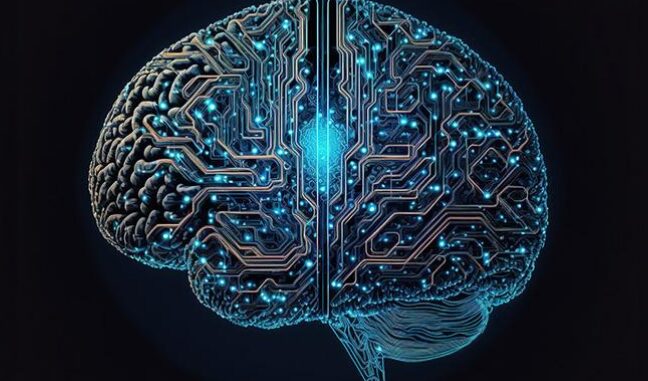
Brain-inspired computing, also known as neuromorphic computing, seeks to mimic the structure and function of the human brain to create more efficient and powerful computational systems.
This approach leverages our understanding of neuroscience to develop hardware and algorithms that emulate the neural architecture and processing mechanisms of the brain.








Here are the key concepts and developments in brain-inspired computing:
Key Concepts:
1. Neuromorphic Hardware
Neuromorphic hardware is designed to replicate the architecture of biological neural networks. Key components include:
Neurons: Analogous to biological neurons, these are the basic processing units that perform computations.
Synapses: Connections between neurons that facilitate communication and learning, similar to synapses in the brain.
Spiking Neural Networks (SNNs): These networks use spikes (discrete events) to transmit information, mimicking the way neurons communicate in the brain.
2. Parallel and Distributed Processing
The brain processes information in a highly parallel and distributed manner. Neuromorphic systems aim to replicate this by:
Parallel Processing: Multiple processing units work simultaneously, increasing computational efficiency.
Distributed Computing: Data and processing are spread across many nodes, enhancing scalability and fault tolerance.
3. Energy Efficiency
The brain is remarkably energy-efficient, consuming about 20 watts of power. Neuromorphic systems aim to achieve similar efficiency by:
Analog Computation: Using analog signals to perform computations, reducing power consumption.
Event-Driven Processing: Performing computations only when necessary, based on the occurrence of spikes or events.
4. Learning and Adaptation
Neuromorphic systems are designed to learn and adapt over time, similar to the plasticity of the human brain:
Hebbian Learning: A principle that synaptic strength changes based on the correlation of activity between neurons (“cells that fire together wire together”).
Spike-Timing-Dependent Plasticity (STDP): A learning mechanism where the timing of spikes determines synaptic strength adjustments.
Developments in Neuromorphic Computing:
1. Neuromorphic Chips
Several neuromorphic chips have been developed to implement brain-inspired computing:
IBM TrueNorth: A chip with 1 million programmable neurons and 256 million synapses, designed for low-power, parallel processing.
Intel Loihi: A neuromorphic research chip with 130,000 neurons and 130 million synapses, supporting on-chip learning and real-time processing.
SpiNNaker (Spiking Neural Network Architecture): A massively parallel computer architecture designed to model large-scale spiking neural networks in real time.
2. Applications
Neuromorphic computing has potential applications across various domains:
Robotics: Enhancing perception, decision-making, and motor control in autonomous robots.
Healthcare: Developing brain-machine interfaces for prosthetics and neuromodulation therapies.
Artificial Intelligence: Improving the efficiency and scalability of AI algorithms for tasks such as image and speech recognition.
Internet of Things (IoT): Enabling low-power, real-time processing in edge devices for smart environments.
3. Research Initiatives
Several research initiatives and collaborations aim to advance neuromorphic computing:
The Human Brain Project (HBP): A European initiative to simulate the human brain and develop brain-inspired computing technologies.
The Brain Initiative: A U.S. initiative focused on understanding brain function and developing new technologies inspired by the brain.
Neuromorphic Computing and Engineering (NCE) conferences and workshops: Platforms for researchers to share findings and collaborate on neuromorphic computing projects.
4. Challenges and Future Directions
Despite significant progress, neuromorphic computing faces several challenges:
Scalability: Developing systems that can scale to the complexity of the human brain.
Interdisciplinary Research: Combining insights from neuroscience, computer science, and engineering.
Standardization: Establishing common frameworks and benchmarks for neuromorphic systems.
Ethical Considerations: Addressing the ethical implications of brain-inspired technologies.
Future Directions:
Integration with AI: Combining neuromorphic computing with traditional AI approaches to enhance performance and efficiency.
Advances in Materials Science: Developing new materials and fabrication techniques to improve neuromorphic hardware.
Biohybrid Systems: Integrating biological components with neuromorphic systems for enhanced functionality.
Brain-inspired computing holds the promise of revolutionizing computing by creating systems that are more efficient, adaptable, and capable of performing complex tasks in a manner similar to the human brain.

Leave a Reply